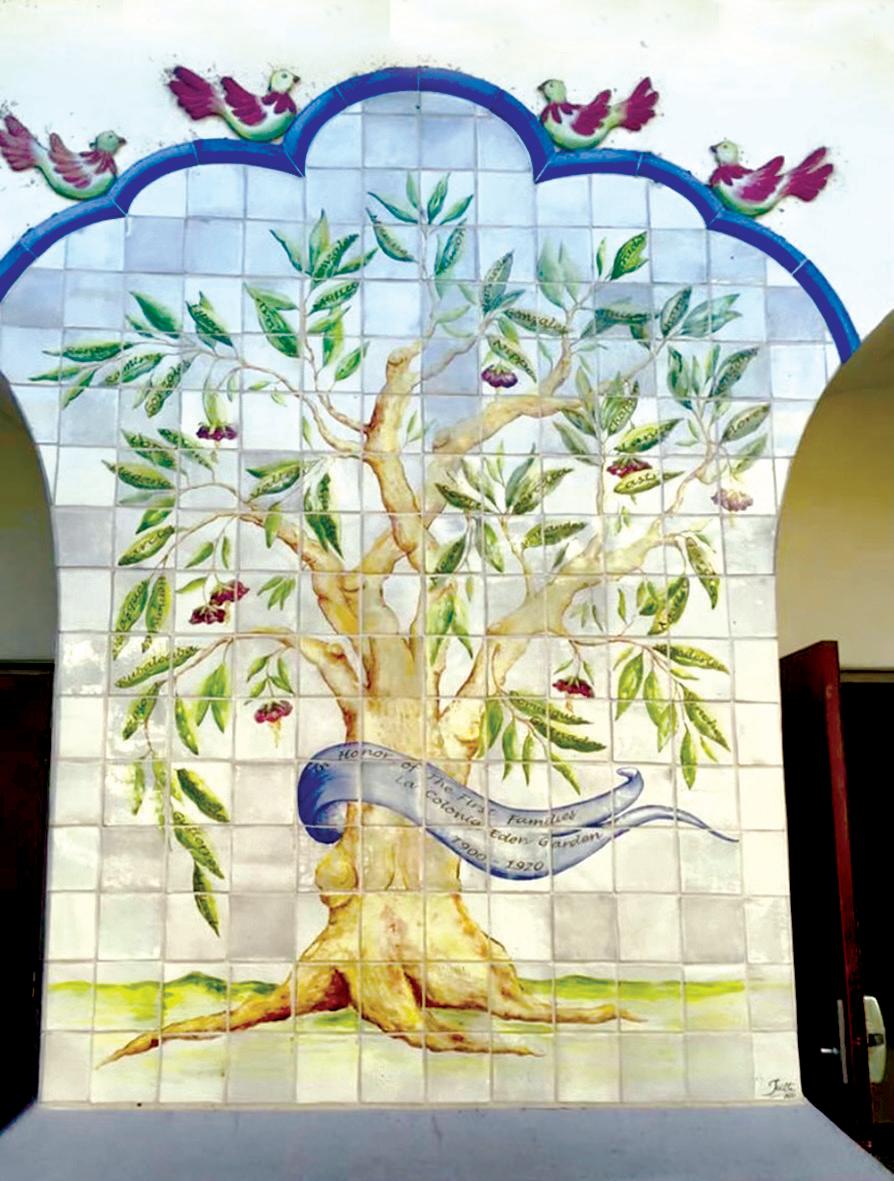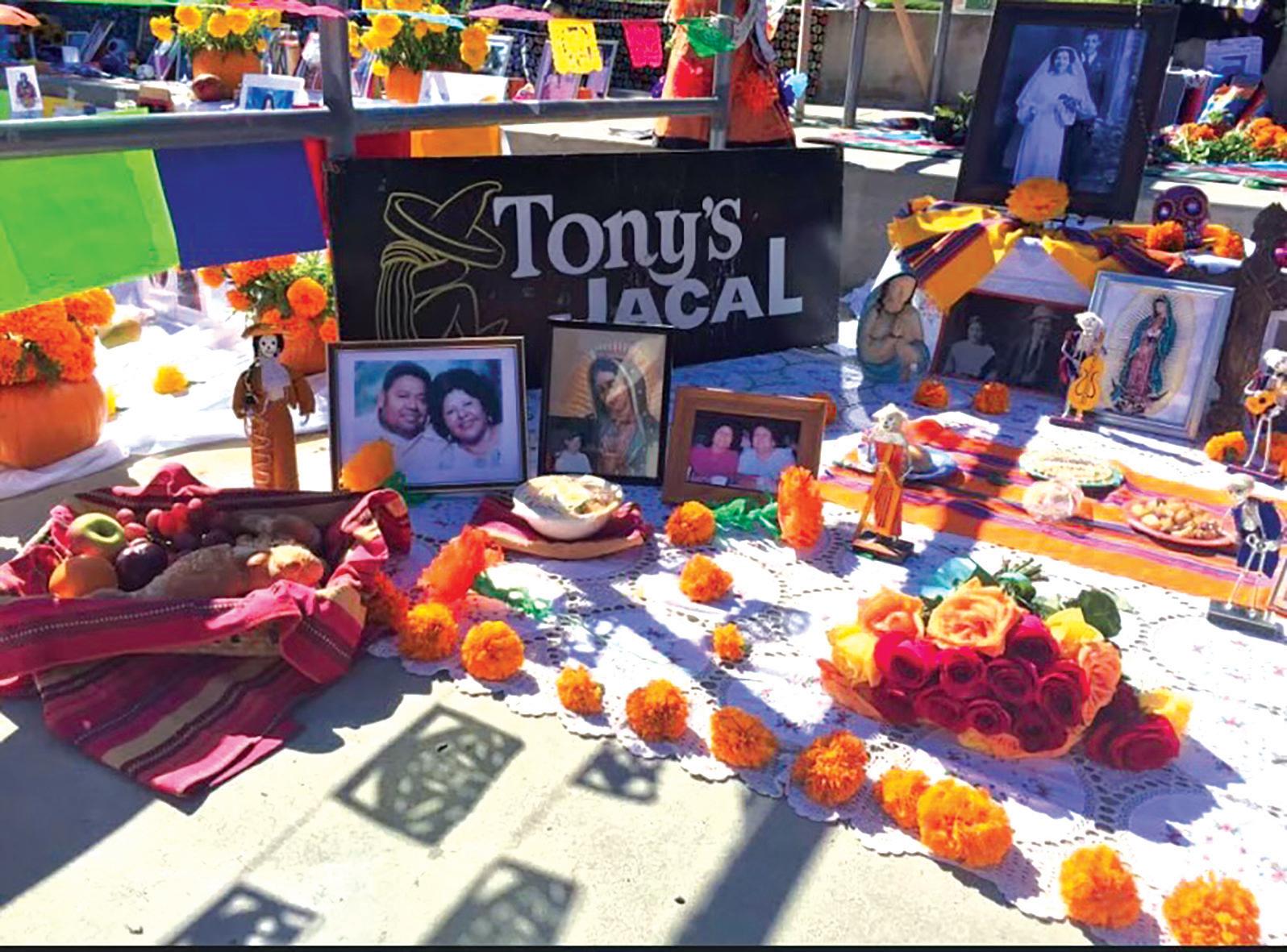
3 minute read
Latino Families Fight to Preserve Heritage in North County
SOLANA BEACH AND SAN MARCOS ARE JUST TWO EXAMPLES OF PLACES IN THE NORTH COUNTY WITH STRONG LATINO ROOTS.
Historic La Colonia de Eden Gardens
Advertisement
La Colonia was Solana Beach’s first neighborhood, predominantly MexicanAmerican, said Lisa Montes, whose family has been there for more than 100 years. We spoke with her and her cousin David Richard Huizar; Aunt (tía) Concepción Gonzales Huizar, who will be 90 in October; and other cousins.
In the 1920s, Mexican-American agricultural workers moved into La Colonia de Eden Gardens to tend to the citrus groves, tomatoes, and lima beans. A tight-knit community formed, Lisa said.
Today, “We’ve seen drastic change to our community,” she said. People are buying the properties “because everyone wants a piece of the ocean, which is only a mile away from us.”
Some of the original families feel pushed out. “We’re getting to the generations where the kids don’t know the other family,” David told us.
They are fighting to preserve the heritage.
Lisa is the curator of the Solana Beach Heritage Museum, located in what was the first home in Solana Beach, at La Colonia Park. Third-grade classes visit the museum and learn the history of the area. Learn more:
On July 8, the Gonzales family is holding its first family reunion, including live interviews with family members. David said it was important to tell the relatives about the relationships. “One generation can lose it completely.”

Lisa’s cousin, Dr. Sara Gonzales, has put together a coloring book for the kids about their history and made a detailed family tree dating back to the 1700s.
A family tradition marks Día de Muertos with a festival and altars. “That’s where we can learn more, remember about our cousins and tíos…,” Lisa said.
Another tradition is the nine nights of neighborhood posadas right before Christmas.
The family makes an effort to remember their ancestors, like Cipriana Martínez Gonzales, who fought the San Diego County Board of Education for desegregation. “She was a trailblazer. Nothing stopped her,” her descendants told us.

Landmarks
Cipriana also fought for La Colonia Community Park, built in the 1970s; there, the Tree of Life tiled wall is dedicated to the first families.

Cipriana also “saved St. Leo’s Mission,” Lisa told us, when the Catholic diocese wanted to shut it down. Cipriana took her fight all the way to the Pope, whose commission ruled in her favor. The church was turned into a mission and can never be closed.
David said he remembers the neighborhood church bells on Sunday mornings. “You got used to hearing it, so that feels like home,” he said.
The community had to fight to keep the bells when new neighbors complained about the noise. Thanks to the backing of lawyers with roots in La Colonia, the bells are ringing once again.
The family speaks fondly of another landmark, Tony Jacal’s restaurant, which they say has been there since 1946. “Traditional dishes…,” David told us. “People who were born and raised here, they come back and say, I want turkey tacos.”
San Marcos: Tony Contreras & John Valdez
Tony Contreras, who taught at San Marcos High School for more than 30 years, believes schools are key to preserving culture and heritage.
Tony explained that a lot of kids get lost to gangs. His nonprofit North County Youth Athletic Center helps get students involved in sports, particularly boxing. “A lot of these kids tell me, if it hadn’t been for your program, I don’t know what I would be doing. I’d be locked up. Might be dead.”
Tony taught Latino high school students their language, history, and culture. He headed the Chicano Studies class and the San Marcos High MEChA group, which promoted the culture and history of Mexican-Americans.

Many of the programs he launched no longer exist. “Kids don’t know who they are,” he said. They “have no clue Cal State used to be full of chickens.” Their ancestors worked at the Prohoroff egg ranch.
Two of Tony’s students were San Marcos District 1 Representative María Núñez, and her sister, Arcela, who run Universidad Popular.
En Aztlán
Meanwhile, John Valdez helped launch the multicultural studies program at Palomar College.
One way he has protected Latino history and culture is through the publishing of the book ‘En Aztlán,’ which preserves Chicano writing.






